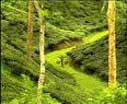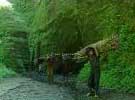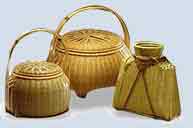SYLHET
 Nestled in the picturesque Surma Valley amidst scenic tea plantations and lush green tropical forests, greater Sylhet is a prime attraction for all tourists visiting Bangladesh. Laying between the Khasia and the Jaintia hills on the north, and the Tripura hills on the south, Sylhet breaks the monotony of the flatness of this land by a multitude of terraced tea gardens, rolling countryside and the exotic flora and fauna. Here the thick tropical forests abound with many species of wildlife, spread their aroma Nestled in the picturesque Surma Valley amidst scenic tea plantations and lush green tropical forests, greater Sylhet is a prime attraction for all tourists visiting Bangladesh. Laying between the Khasia and the Jaintia hills on the north, and the Tripura hills on the south, Sylhet breaks the monotony of the flatness of this land by a multitude of terraced tea gardens, rolling countryside and the exotic flora and fauna. Here the thick tropical forests abound with many species of wildlife, spread their aroma  around the typical hearth and homes of the Mainpuri Tribal maidens famous for their dance. The Sylhet valley is formed by a beautiful, winding pair of rivers named the Surma and the Kushiara both of which are fed by innumerable hill streams from the north and the south. The valley has good number of haors which are big natural depressions. During winter these haors are vast stretches of green land, but in the rainy season they turn into turbulent seas. These haors provide a sanctuary to the millions of migratory birds who fly from Siberia across the Himalayas to avoid the severe cold there. around the typical hearth and homes of the Mainpuri Tribal maidens famous for their dance. The Sylhet valley is formed by a beautiful, winding pair of rivers named the Surma and the Kushiara both of which are fed by innumerable hill streams from the north and the south. The valley has good number of haors which are big natural depressions. During winter these haors are vast stretches of green land, but in the rainy season they turn into turbulent seas. These haors provide a sanctuary to the millions of migratory birds who fly from Siberia across the Himalayas to avoid the severe cold there.
Sylhet has also a very interesting and rich hilstory, Before the conquest by the Muslims, it was ruled by local chieftains. In 1303, the great Saint Hazrat Shah Jalal came to Sylhet from Delhi with a band of 360 disciples to preach islam and defeated the then Raja Gour Gobinda. Sylhet thus became a district of saints, shrines and daring but virile people. Its rich  potentialities became easily attractive and the 18th century Englishmen made their fortune in tea plantation. About 80 km. from Sylhet town connected by road and rail, Srimangal, which is known as the tea capital of Bangladesh, is the actual tea centre of the area. For miles and miles around, the visitor can see the tea gardens spread like a green carpet over the plain land or on the sloping hills. A visit to the tea plantation in Sylhet is a memorable experience. Sylhet, the tea granary of Bangladesh, not only has over 150 tea gardens but also proudly possesses three largest tea gardens in the world both in area and production. potentialities became easily attractive and the 18th century Englishmen made their fortune in tea plantation. About 80 km. from Sylhet town connected by road and rail, Srimangal, which is known as the tea capital of Bangladesh, is the actual tea centre of the area. For miles and miles around, the visitor can see the tea gardens spread like a green carpet over the plain land or on the sloping hills. A visit to the tea plantation in Sylhet is a memorable experience. Sylhet, the tea granary of Bangladesh, not only has over 150 tea gardens but also proudly possesses three largest tea gardens in the world both in area and production.
Madhabkunda
About 3 km. from Dakhinbagh Railway Station there is the famous waterfall of Madhabkunda which attracts large number of tourists every year.
Tamabil-Jaflong
Situated amidst splendid panorama, Tamabil is a border outpost on Sylhet-Shilong Road about 55 km. away from Sylhet town. Besides enchanting views of the area one can also have a glimpse of the waterfalls across the border from Tamabil. Jaflong is also a scenic spot nearby amidst tea gardens and rate beauty of rolling stones from hills.
Manipuri Dance
 An interesting feature of Sylhet region is the aboriginal tribes such as the Tipperas, the Monipuris, Khasis and Garos who still live in their primitive ways in the hills, practising their age-old rites, rituals, customs and traditions. During festivals such as, Rash Leela (Full-moon night in February) and Doljatra, the attractive young girls dressed in colorful robes, dance with the male members of their choice & love. The Monipuris perform their famous dance, based on allegorical love themes of the ancient mythology. An interesting feature of Sylhet region is the aboriginal tribes such as the Tipperas, the Monipuris, Khasis and Garos who still live in their primitive ways in the hills, practising their age-old rites, rituals, customs and traditions. During festivals such as, Rash Leela (Full-moon night in February) and Doljatra, the attractive young girls dressed in colorful robes, dance with the male members of their choice & love. The Monipuris perform their famous dance, based on allegorical love themes of the ancient mythology.
Handicrafts
 Sylhet is well-known for its wide variety of exquiste handicrafts. Well-known Sylhet cane products such as chair, table, tea trays, flower vases, bags and the exquisitely designed fine Sital Pati (a kind of mattress Sylhet is well-known for its wide variety of exquiste handicrafts. Well-known Sylhet cane products such as chair, table, tea trays, flower vases, bags and the exquisitely designed fine Sital Pati (a kind of mattress
Back to the top |

